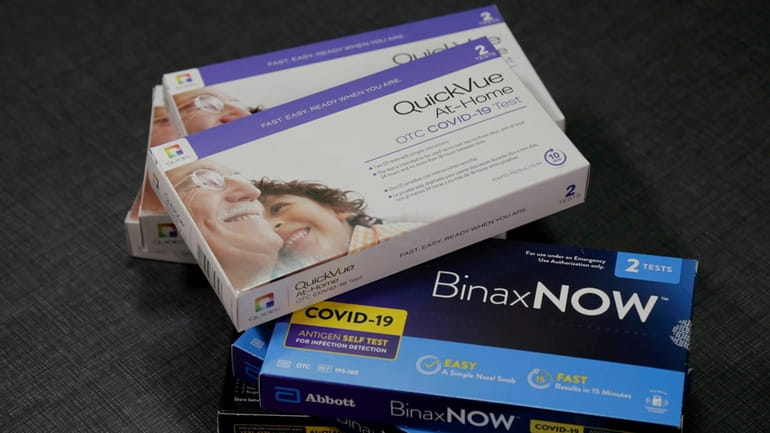Nearly 4 years in, the latest on Long Islanders and COVID-19

Hospitals are generally no longer performing COVID-19 tests absent symptoms, so the latest Long Island hospitalization results include only patients hospitalized for the virus as the primary cause. Credit: Newsday/William Perlman
As the four-year anniversary approaches since a novel coronavirus originating in China arrived in New York, the disease it causes — COVID-19 — continues to infect Long Islanders, although rates have continued to slowly fall since Christmas. The latest variant, JN.1, is similar to its more recent cousins and has not led to a spike in serious illness.
Here’s the latest about the virus.
How many people are being hospitalized on Long Island with COVID-19?
As of Jan. 26, there were 450 patients hospitalized, which amounts to 15.85 per 100,000, according to the New York State Department of Health’s COVID-19 tracker. The rate had been rising since mid-November, with about 200 patients a day and 6.48 per 100,000, appearing to peak around early January, with about 650 patients and 23 per 100,000.
At St. Francis Hospital in Flower Hill, rates of COVID-19 hospitalization are trending down — but not by much, according to Dr. Alan Bulbin, director of infectious disease.
“Maybe it’s diminished a little bit, but unfortunately, still seems rather widespread and prevalent, still requiring a number of admissions daily,” Bulbin said. “So, maybe flattening to some degree, but still concerning in the overall number.”
He said the hospital still gets several admissions per day for COVID-19, a number that excludes those who come for treatment at the emergency room or as outpatients.
Sean Clouston, a professor and epidemiologist at Stony Brook University, said overall hospitalization rates peaked right after Christmas but have slowly dropped ever since.
“They’re generally on the decline,” he said.
The figures are for those hospitalized because of COVID-19, not for patients treated in the emergency room for something separate but who also happen to be positive. Hospitals, he said, are generally no longer performing COVID-19 tests absent symptoms.
What is the latest variant of COVID-19?
It’s called JN.1, and is a variant of SARS-CoV-2. It's currently the most widely circulating variant in both the United States and globally, according to the Centers for Disease Control and Prevention. (JN.1 was first detected in the United States in the fall.) Clouston said that in the past, cases had seen a quick drop-off after Christmas. But with this variant, it’s plateaued, or more slowly dropped off. “It’s kind of lingering more,” Clouston said of new cases.
And how many COVID-19 cases are in Nassau and Suffolk counties?
As of Jan. 26, 551 people tested positive — 19.4 cases per 100,000, with 26.9 cases per 100,000 on the seven-day average, according to the health department. On Nov. 16, there were 339 people who tested positive, 11.9 cases per 100,000 and 11.4 cases per 100,000 on the seven-day average. On Jan. 2, there were 2,096 positive people, 73.8 cases per 100,000 and 54.1 per 100,000 on the seven-day average.
Bulbin said the JN.1 variant hasn’t led to overall more serious disease.
“It’s basically similar to its prior omicron cousins who predated it,” he said. “So, if any good news, it’s not leading to any more severe disease.”
What should someone do who’s concerned about COVID and wants to take precautions?
Especially if a person is older than 65, immunocompromised, has underlying medical problems or some combination: Stay current on vaccines, and consider avoiding crowds and group gatherings, Bulbin said.

